By Rick VanSickle
Like many brave souls before them, Andre Gagne and Debra Mathews, had a dream to establish a “passion project” that involved grapes, wine and farming in an idyllic setting.
Also in this report: New wines from the Fourth Wall, Malivoire, the new VQA Matchmaker, Vintages on-line release including two orange wines from Southbrook and Marynissen, plus a tasty new RTD Port-style drink from Taylor-Fladgate.
They tried buying land in Niagara, but in the end, Prince Edward County ticked more boxes for them as they wanted to “contribute to the body of evidence of the great potential of PEC for wines made with Pinot Noir and Chardonnay grapes.” The plan was to “stay busy and engaged after retirement from corporate life in 2022,” and try and build something that was “rewarding” and at the very least, “cashflow neutral.”

The couple, Mathews a former reporter and producer with the CBC, and Gagne (above), an executive with metro Inc. and a home winemaker, went all in on their dream. They sold their home in Etobicoke and bought property in Prince Edward County in 2016. Mathews relocated to PEC in October of 2016 while Gagne commutes on weekends from work and their condo in Etobicoke.
The Last House Vineyard, located at 23 County Road 20 in Wellington, consists of 11 acres, a two-storey home and water frontage on Lake Ontario in the Hillier ward. Only 1.25 acres of grapes — 50% Pinot Noir and 50% Chardonnay — are under vine on the property, which was planted by the late Richard Karlo in 2009 in soil that is Ameliasburgh clay loam over a layer of limestone shale. The fruit formerly was sold to Stanners Winery from 2014 to 2018 inclusive.
Under the guidance of viticultural consultant Geoff Heinricks (author of A Fool and Forty Acres), a vineyard expansion was given the go ahead with three more acres of Chardonnay and a half acre of Pinot planted in 2018 and another half-acre of Pinot planted the following year. Also, in 2018 Gagne planted 135 Golden Russet apple trees between the vineyard and house for a small companion cider program.
The 2019 vintage was the first produced under the Last House label with 89 cases of Pinot Noir, Pinot Noir Reserve and Chardonnay produced.
Gagne said he only plans on making 100% Prince Edward County VQA wines with non-interventionist winemaking techniques, wild yeast fermentation, no enzymes or nutrients added, and minimal sulphur. All wines are bottled by hand without filtering or fining.
For the 2020 production, Gagne was able to expand the portfolio that includes the Hillier Rouge Daniel Block Pinot Noir, Hillier Blanc Christian Block Chardonnay, Petit Hillier Blanc Chardonnay, a small production of Traditional Method Blanc de Noir, a piquette made from Pinot Noir skins and bottled “still” called Tranquille, and a still cider made from local Northern Spy apples called Cidre Tranquille.
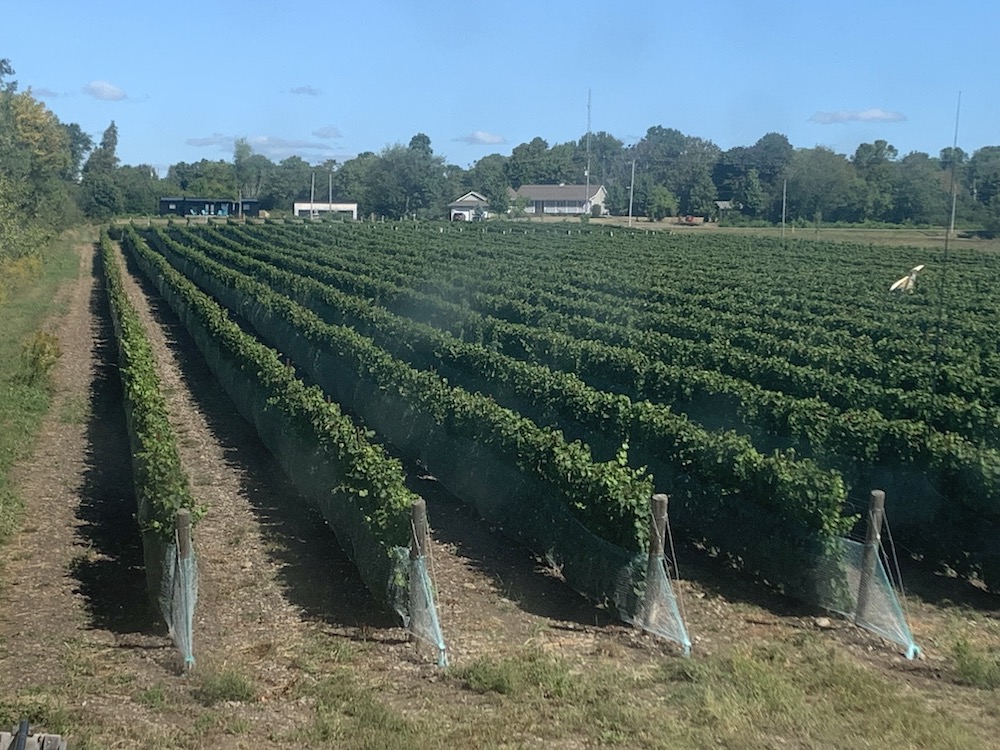
As for the name of the winery and vineyard, Gagne explained it this way to Archives Wine and Spirits, the first bottle shop to sell Last House wines: “It’s the title of a book by American author MFK Fisher. Both my wife Debra and I love Fisher’s writing. She retired from her writing career in Europe and settled in California. A friend allowed her to build a house — her last house — surrounded by vines on his property. There she published her last book, a collection of memoirs called Last House. Debra and I both came from military families that moved frequently. As a couple we have had 12 addresses. The move to PEC includes a house which we renovated, as well as a vineyard and winery. We sincerely hope it is our Last House.”
The Last House wines are available for sale, but Gagne is relying on word on mouth as there is no tasting room or website quite yet. Archives Wine and Spirits in St. Catharines seems to always have a steady supply of Last House Wines, check here for availability. You can also follow Last House Vineyard here on Instagram.
The first wine I had tasted prior to meeting Gagne in person just recently was the Last House Hiller Rouge Daniel Block 2019 purchased at Archives. I was immediately smitten by this personable County Pinot and wanted to know more about the upstart winery. I attempted to visit earlier in the summer, but my timing was off. Then I found the Last House cider on the shelves, again at Archives, and fell in love with the still, dry style Gagne was making. So, when Gagne said he was coming down to St. Catharines for a visit, I said, come on over.
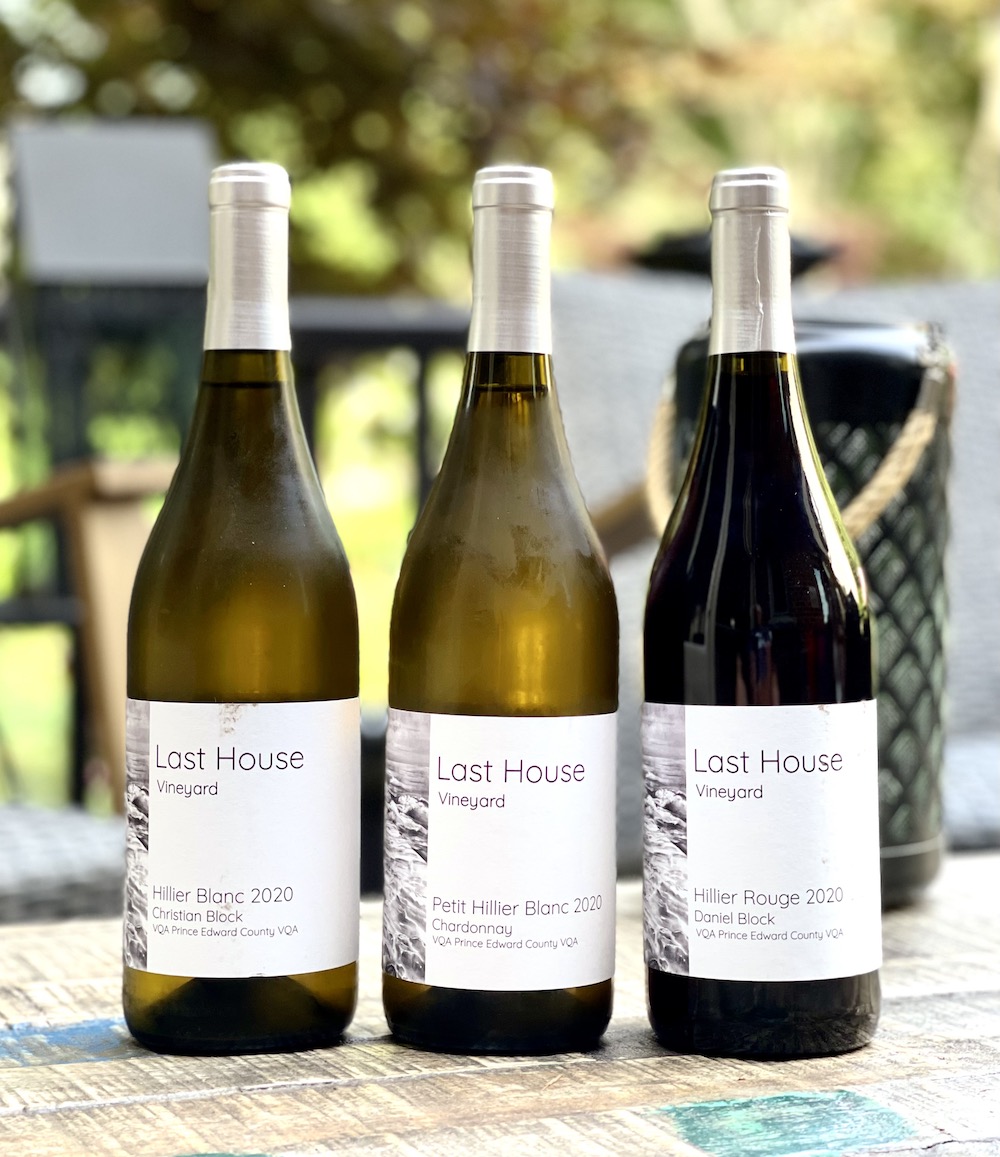
We sat in my backyard and chatted about his project, his wines and life in general for quite a while and I discovered a man deeply committed to producing terroir-driven Pinot and Chard with some other treats on the side, including piquette, cider and sparkling wines. If you crave the County vibe in authentic wines being made in the region, you just have to seek out these wines, which are selling out quickly.
I tasted three wines from the 2020 vintage — one Pinot and two Chardonnays. The Pinot followed the path of the 2019 version while my first taste of the Chardonnays was a cerebral experience. They were unlike any Chardonnays I have tasted from the County. The Hiller Blanc in particular was thought-provoking and might not be everyone’s cup of tea, but I urge those seeking a different path for Chardonnay to taste them for yourself. These are my notes below.
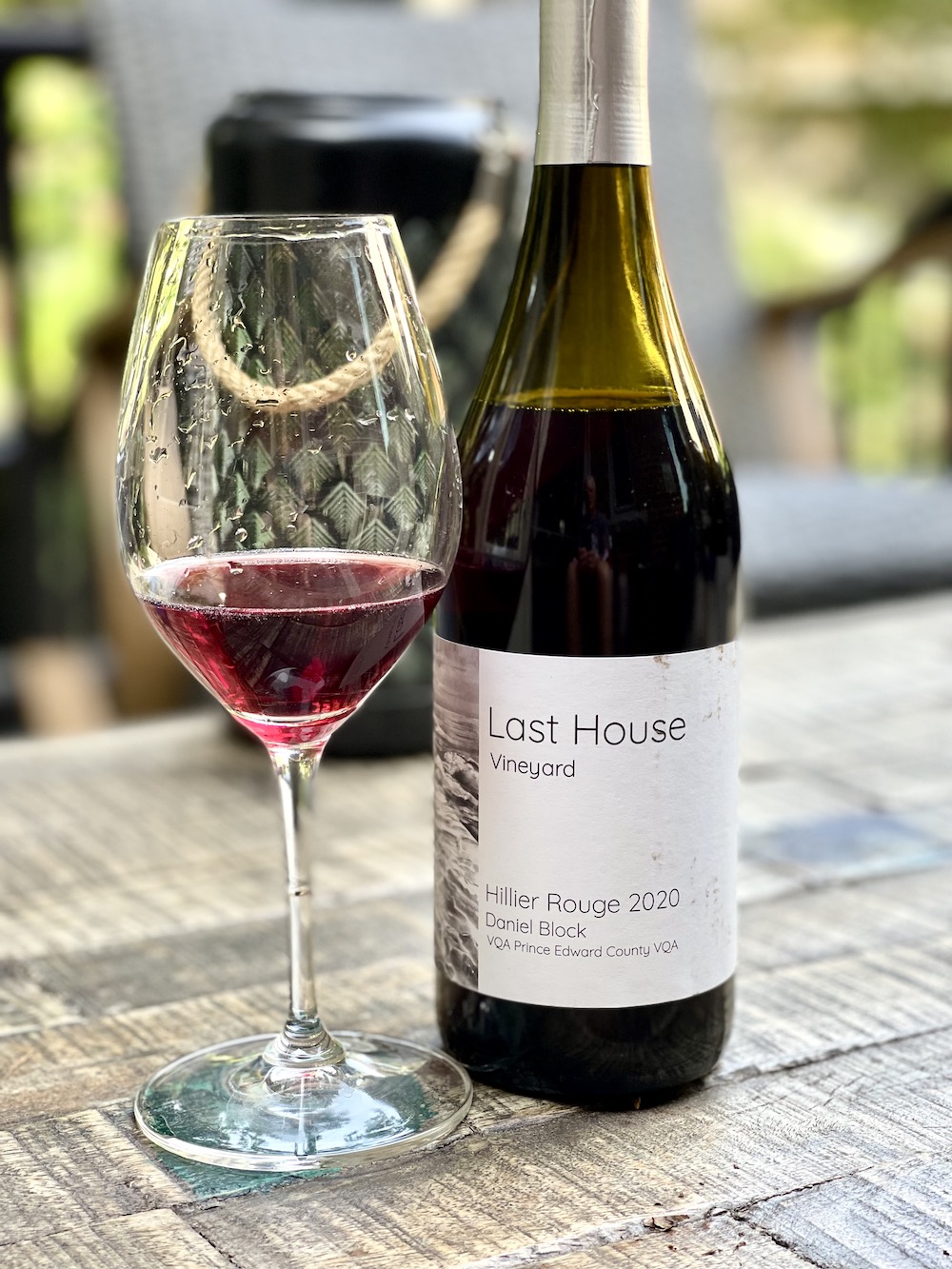
Last House Vineyard Hillier Rouge Daniel Block 2020 (93 points) — This is from 100% estate grown Pinot Noir from the vineyard planted by Richard Karlo in 2009. It was crushed and destemmed with 25% whole clusters added. It was wild fermented and aged in 85% neutral French oak, lightly sulphured and bottled unfined and unfiltered. It shows a beautiful garnet colour in the glass and has an expressive nose of wild black raspberries, macerated dark cherries, blueberries, red currants, and a subtle spice background. It’s just gorgeous on the palate with a cherry/raspberry explosion, some earthy/savoury notes, cassis, soft, silky tannins, just a hint of pepper and a lifted, finessed finish.
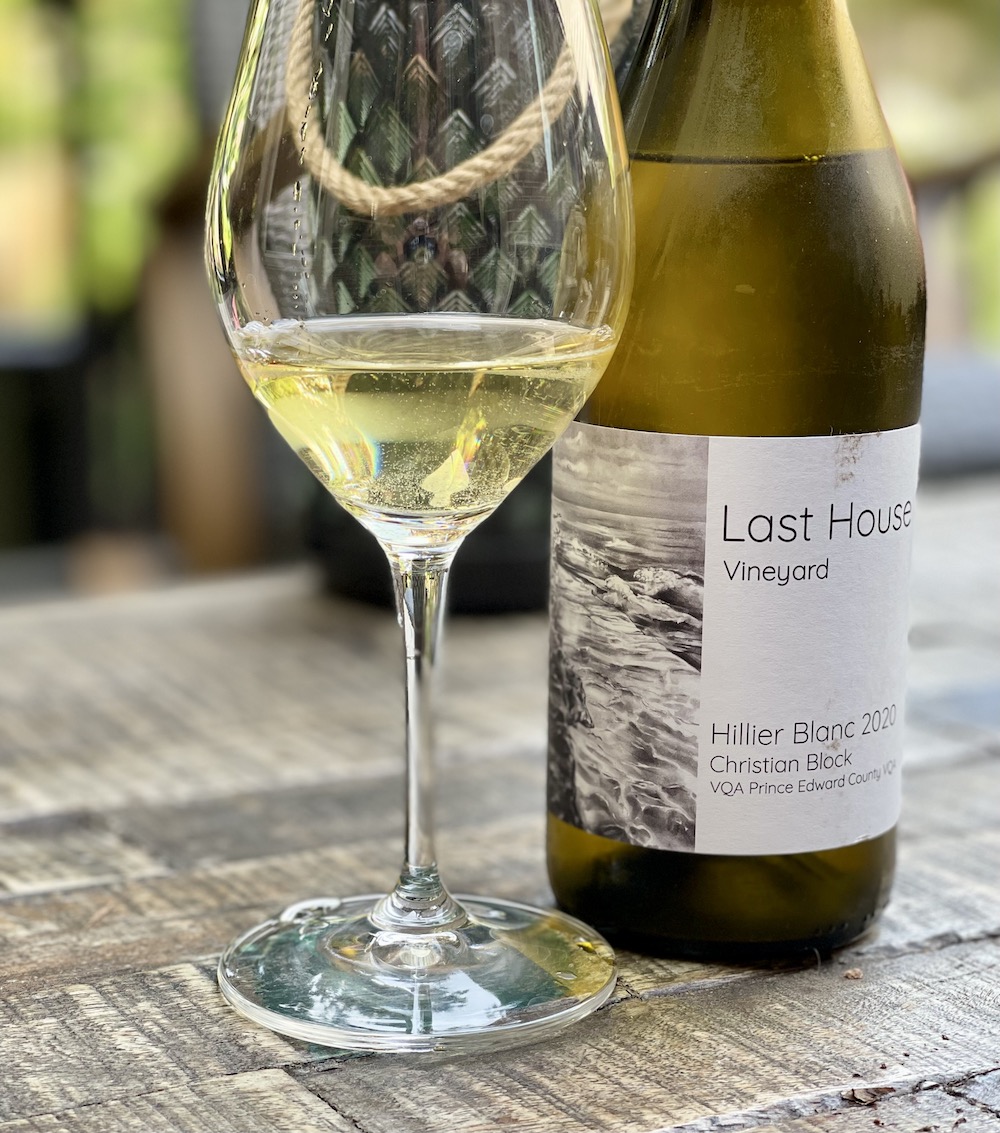
Last House Hiller Blanc Christian Block 2020 (91 points) — This 100% estate Chardonnay was whole cluster pressed in a water pressure basket press. It was wild fermented with 75% of the wine transferred to barrel for spontaneous malolactic fermentation and elevage (new barrels). It was bottled unfiltered and unfined and was lightly sulphured after malo and at bottling. It has a unique and savoury nose with a saline beginning then fresh-cut pear, golden apple, citrus zest/lemon oil and subtle spice notes. There is a subtle note of reduction on the palate followed by sweet pear, baked apple, lemon tart, wild sage, gentle oak spice and mouth-watering acidity to give the finish plenty of lift.
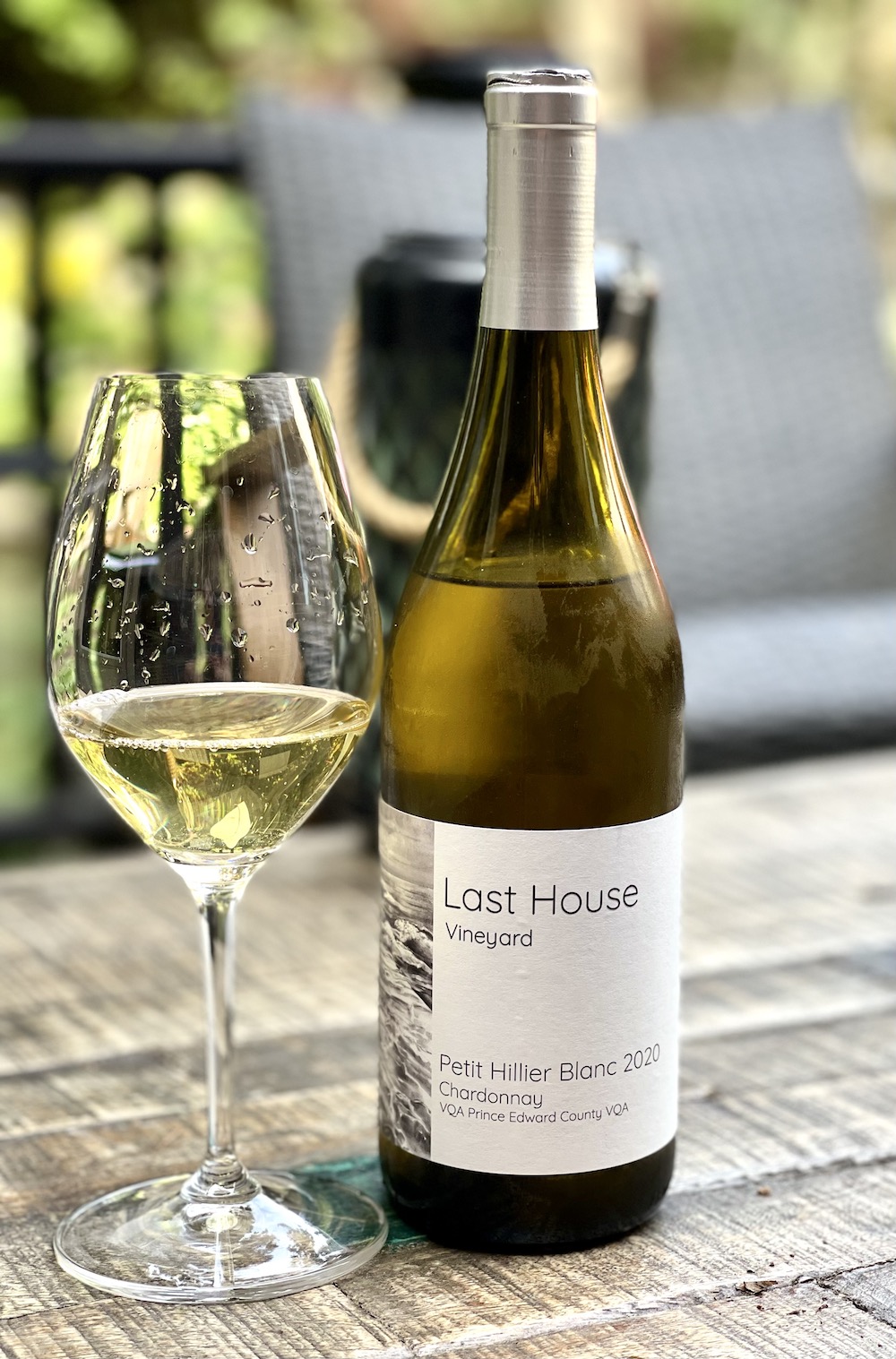
Last House Petit Hillier Blanc 2020 (92) — It is here the discussions will take place. This is unlike any Chardonnay I have tasted and I’m still trying to process it. It is made just like the Chardonnay above, but it comes from an estate vineyard planted by Gagne in 2018. There is an unmistakeable sherry note (reduction?) on first opening the bottle. It does blow off with a bit of time or try decanting. Gagne said he’s not sure where it is coming from, but “Geoff Heinricks and I suspect it is partly related to terroir and the benign farming regimen,” he said. “This characteristic has been polarizing among early tasters; some love it and some can’t understand why a chard would have it. Behind it all, the fruit, acid structure and texture of the wine are excellent.” I found it to have a sweet savoury profile on the nose and added flinty/saline notes before the quince, lemon biscuit and pear kick in, followed by subtle oak spices. It’s a fine, chiseled Chardonnay on the palate with an interesting profile of apple, pear, zesty citrus, touch of reduction and flinty minerality, mouth-watering acidity and vibrancy through a lifted finish. This wine intrigues me and I want more.
A pair of new Fourth Wall wines

Joel Wilcox, above, is not a winemaker (he’s a key account manager and sommelier at Woodman Wine and Spirits), but he has a focused palate after years of working both in the Niagara wine industry and with various wine lists in Toronto. He knows what consumers are looking for in their wines and he is determined to craft Niagara wines that speak to them. And that is what he hopes to do with an ever-revolving portfolio from his virtual brand.
“Wine should communicate ‘place’ to the drinker,” Wilcox told Wines In Niagara in previous post. “Wine should speak to its audience. It made sense to align the ideas.” He is expressing terroir without being preachy about it. He is shining a spotlight on the fruit without crowding it with too much of anything. The result is a tidy collection of wines that are unique in that they all express the purity of the varieties using “lower alcohol, less oak, more acid, healthy fruit, maybe some small technical faults that add complexity, and always balance,” he says.
Here are two of latest wines tasted by Wines In Niagara:
Note: In terms of local bottle shop availability, Archives Wine and Spirits has both wines, Dispatch has the Merlot, Twenty Kitchen is pouring the Pinot Gris by the glass, and Treadwell is doing the Merlot by the glass. For more information, go to Fourth Wall Wines here.
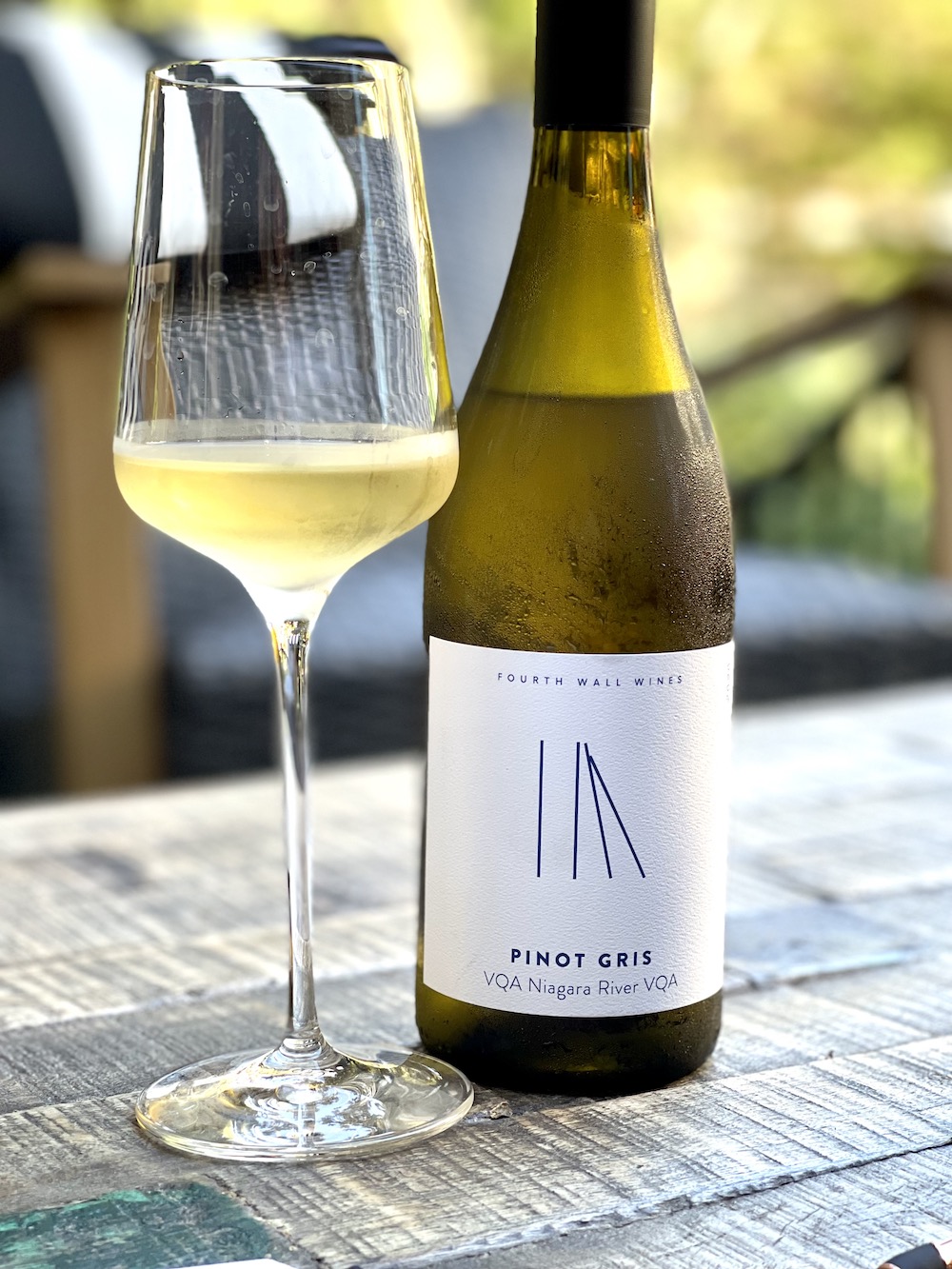
Fourth Wall Pinot Gris 2020 ($22, 91 points) — This Niagara River sourced Gris from Riverview Cellars, made by Alyssa Bator and Nick Salvatora, has a vibrant, pure nose of summer peach, melon, crisp apple, and citrus notes. It’s juicy and clean on the palate with ripe orchard fruits of pear, apple, peach, and nectarine with a pinch of spice. It’s fleshy yet lifted from mouth-watering acidity.
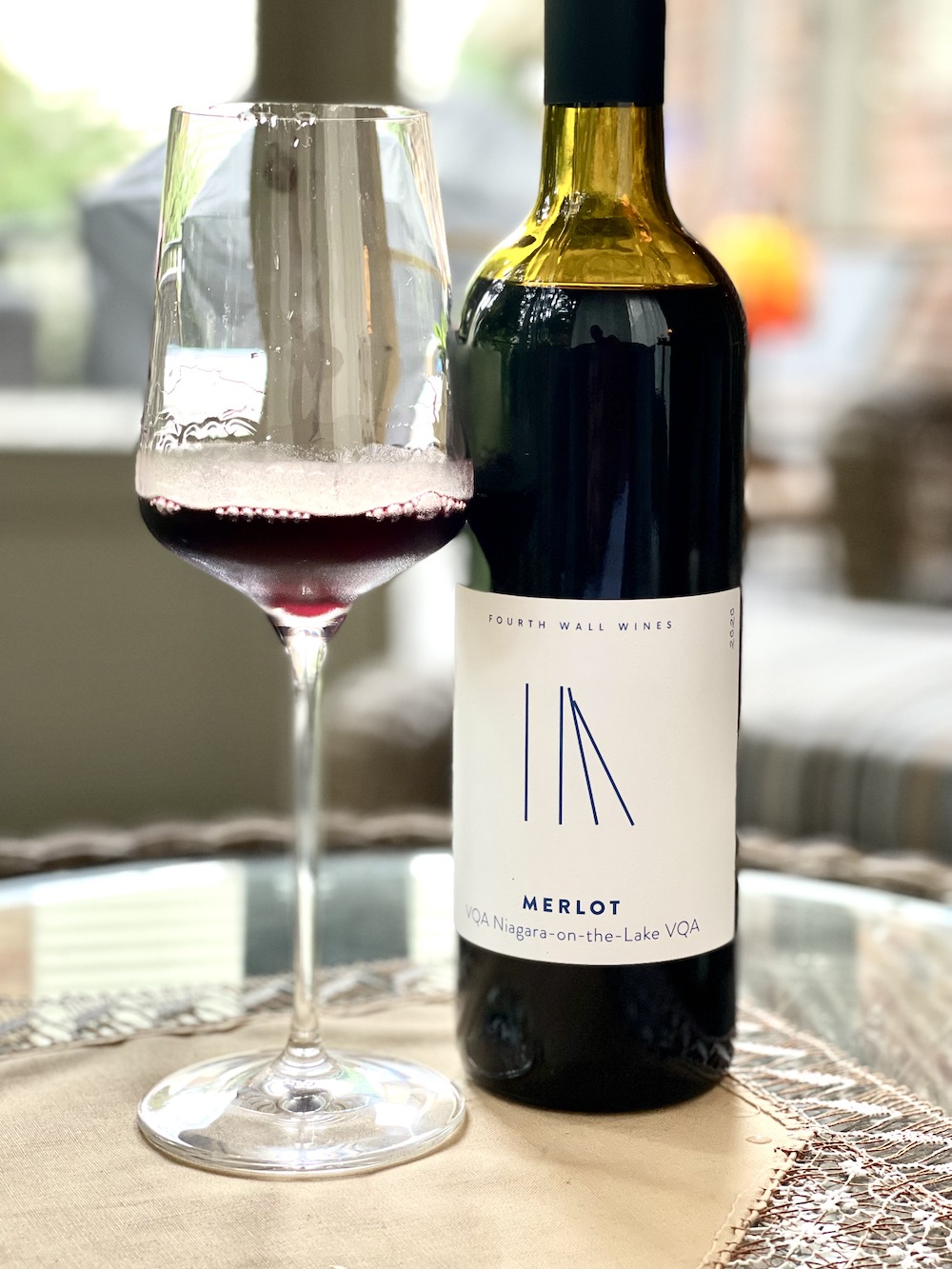
Fourth Wall Merlot 2020 ($32, 91 points) — The majority of the fruit (85% Merlot, with 5% each of Syrah, Cabernet Sauvignon and Malbec), is sourced from 20-year-old vines from Niagara-on-the-Lake’s Riverview Cellars and is also made by Riverview’s Bator and Salvatora. It shows how wonderful Niagara Merlot can be on its own in a warm vintage. A full throttle nose of macerated black cherries, wild blackberries, and raspberries with a clean, vibrant personality with little oak cluttering up things. It’s juicy and bright on the palate with those plump red berries mingling with a pinch of anise, earthy undertones, meaty notes, and integrated oak spices. The tannins are soft but helping to build structure with a finessed finish. Can cellar up to five years.
A duet of new reds from Malivoire
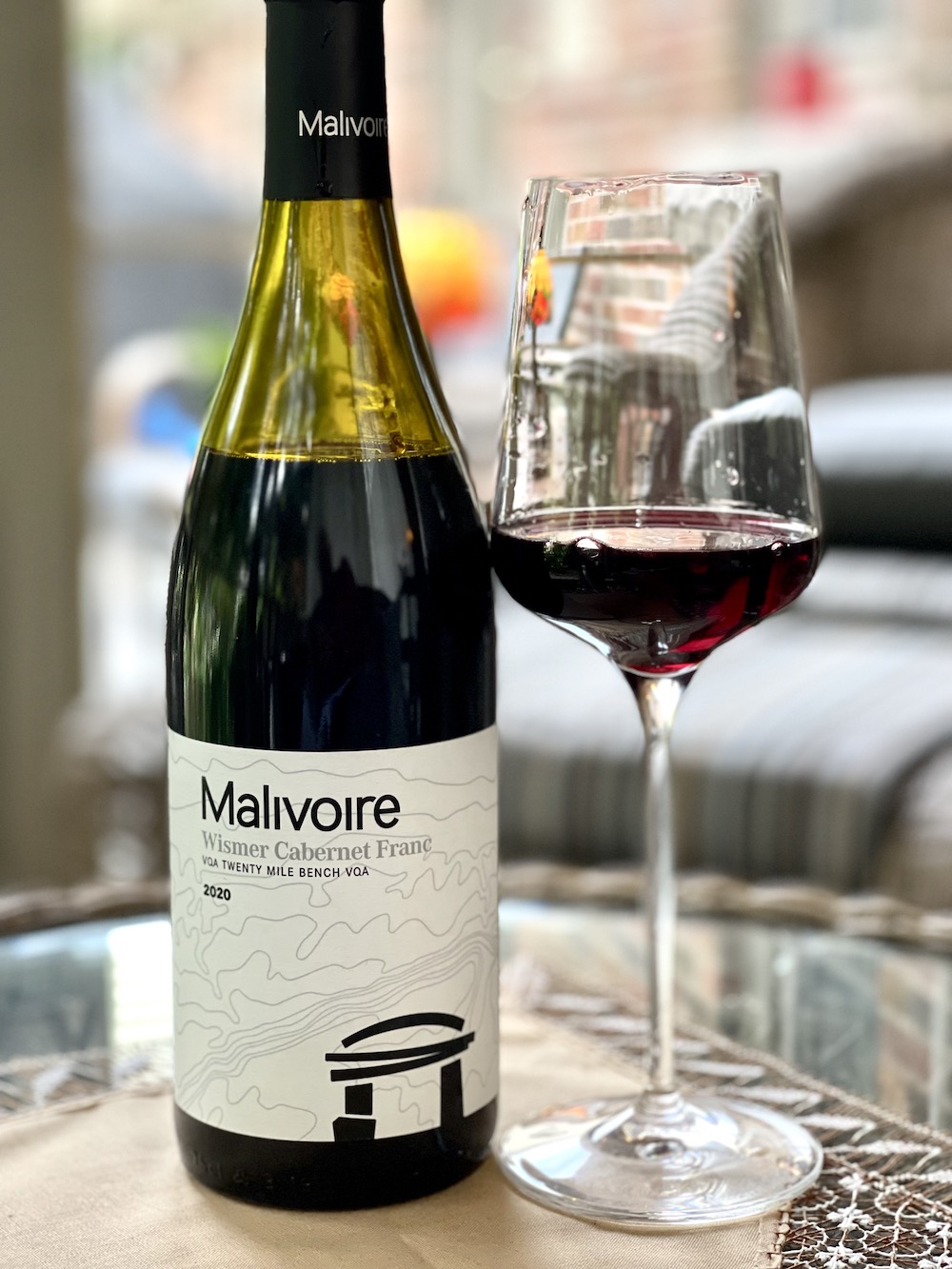
Malivoire Wismer Cabernet Franc 2020 ($27, winery only, 92 points) — Freshly picked grapes were destemmed before primary fermentation in two large oak cuves. After, 12% of the wine was drained to new French oak puncheons and rest to more neutral barriques. The whole was blended back into mature barrels to age for an additional three months. It has an attractive dark purple colour in the glass and nose of black raspberries, bramble, floral notes, anise, plums, and Christmas spices. The polished tannins on the palate are smooth with earthy/savoury red berries, black licorice, toasted oak spice notes and a lifted, long finish. Can cellar up to seven years.
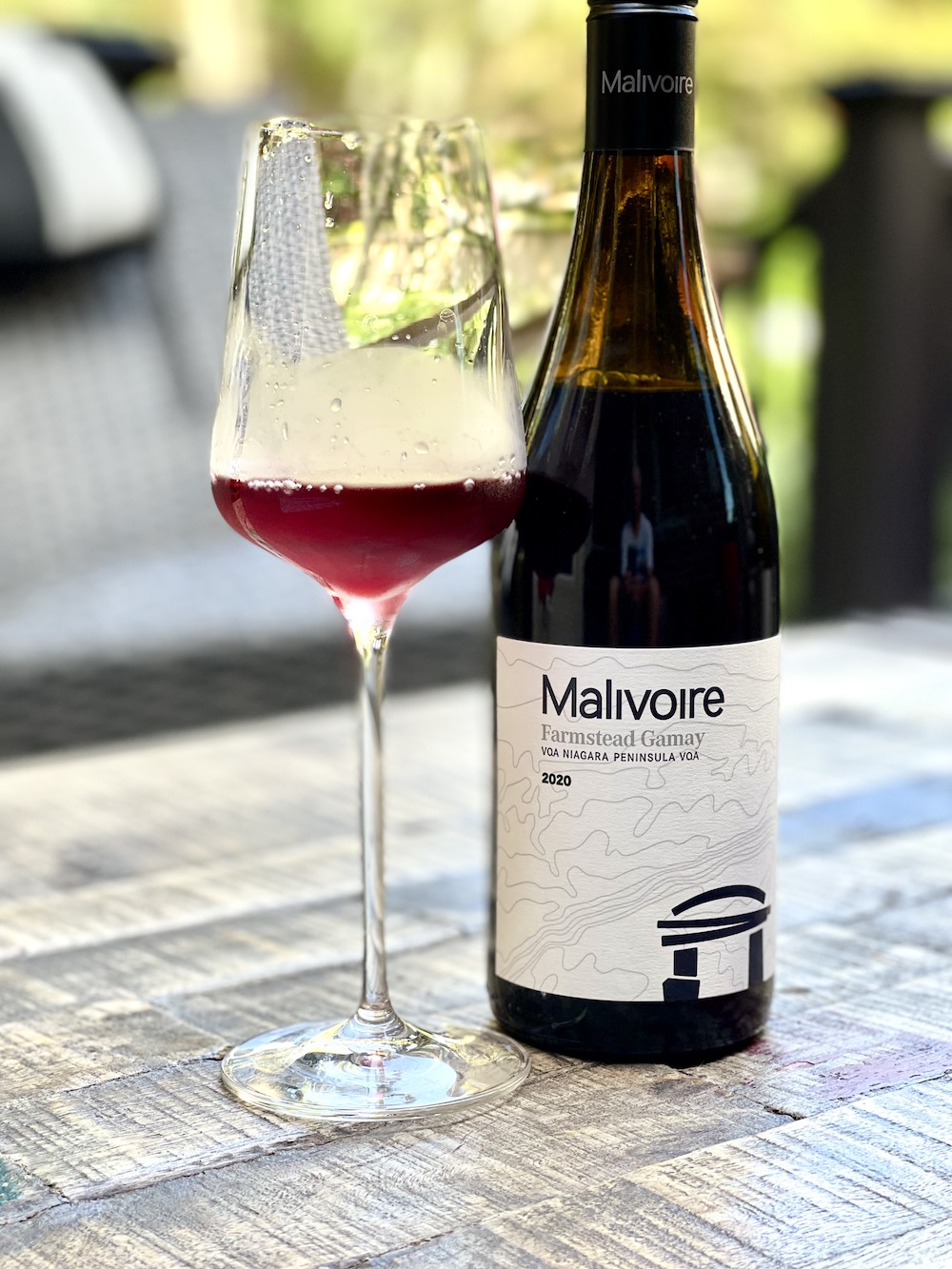
Malivoire farmstead Gamay 2020 ($22, Vintages, 91 points) — Most of the grapes were destemmed and crushed with a small amount crushed in whole clusters. While the greater share of the juice sent to stainless steel, 13% was treated in concrete tank. Following fermentation, two thirds was aged in stainless steel and the rest aged in neutral oak barrels. What a lovely, juicy Gamay with aromas of dark cherries, wild raspberries, strawberry tart, and Damson plums with just a hint of spice. The palate lights up with a rainbow of red berries, earth, subtle spice with just enough tannins to offer a dimension of complexity. The mouth-watering acidity kicks in on the finish. Great job here.
Find your perfect VQA match

The Wine Marketing Association of Ontario (WMAO) has launched a new wine-matching tool for wine fans. The “VQA Matchmaker” connects wine lovers with their perfect Ontario VQA wine match, according to WMAO. “This new digital tool makes searching for wine fun and easy and is available now, no downloading required, here (https://winecountryontario.ca/) a mobile-friendly site,” a news release said.
All the 140+ Ontario VQA wineries listed on the Wine Country Ontario website, can regularly update new wine releases so that wine fans are able to find their favourites or discover a new VQA wine match they might not be expecting. Hundreds of local VQA wine options make finding a VQA Match lots of fun!
The unique design of the matchmaker boasts the option to create quick VQA matches in addition to multiple VQA match lists, to be saved and/or shared with friends. Wine fans have endless options to create single matches or custom lists for different occasions that might include different wines selected and matched for friends and family. That way, they aren’t locked into wines that are strictly based only on their own personal preferences, something other apps and search tools require.
The matchmaker makes it easy to find wines based on various criteria including varieties, styles, and sweetness levels. Extra filters make it fast to find wines that are award winning, sustainable or from a particular wine growing region within Ontario.
“The VQA Matchmaker is a one-of-a-kind digital tool for wine fans to find the perfect VQA wines for themselves, and for any occasion,” said Sylvia Augaitis, executive director of marketing at the Wine Marketing Association of Ontario. “We are thrilled to add this alongside our Wine Country Ontario Trip Planner for an enhanced consumer VQA wine experience, all in one mobile-friendly place.”
Our picks from the Vintages
online release July 30
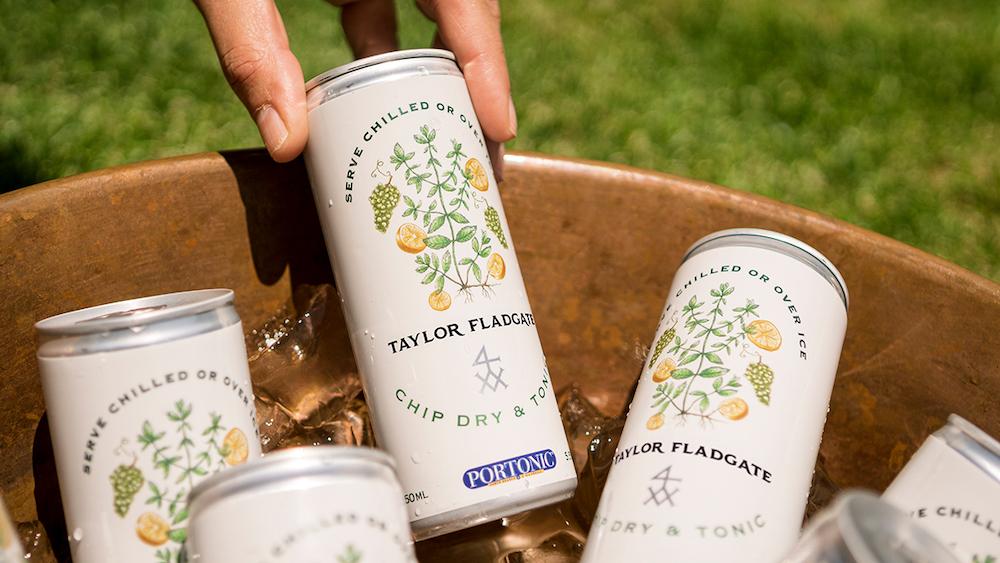
It’s another small selection of Niagara wines at the now reduced twice-monthly Vintages releases. This is the online-only release and features a pair of skin-fermented white wines from Niagara-on-the-Lake, both of which we recommend below. We also taste the unique and delicious RTD Port cocktail from Taylor-Fladgate that we can highly recommend.
The ready-to-drink (RTD) craze has absolutely taken off this year. Cruise the aisles of any LCBO store and you’ll find these (mostly) canned beverages fighting for your attention. I like a lot of them and find the ones I keep going back to, are well-made and not overly sweet.
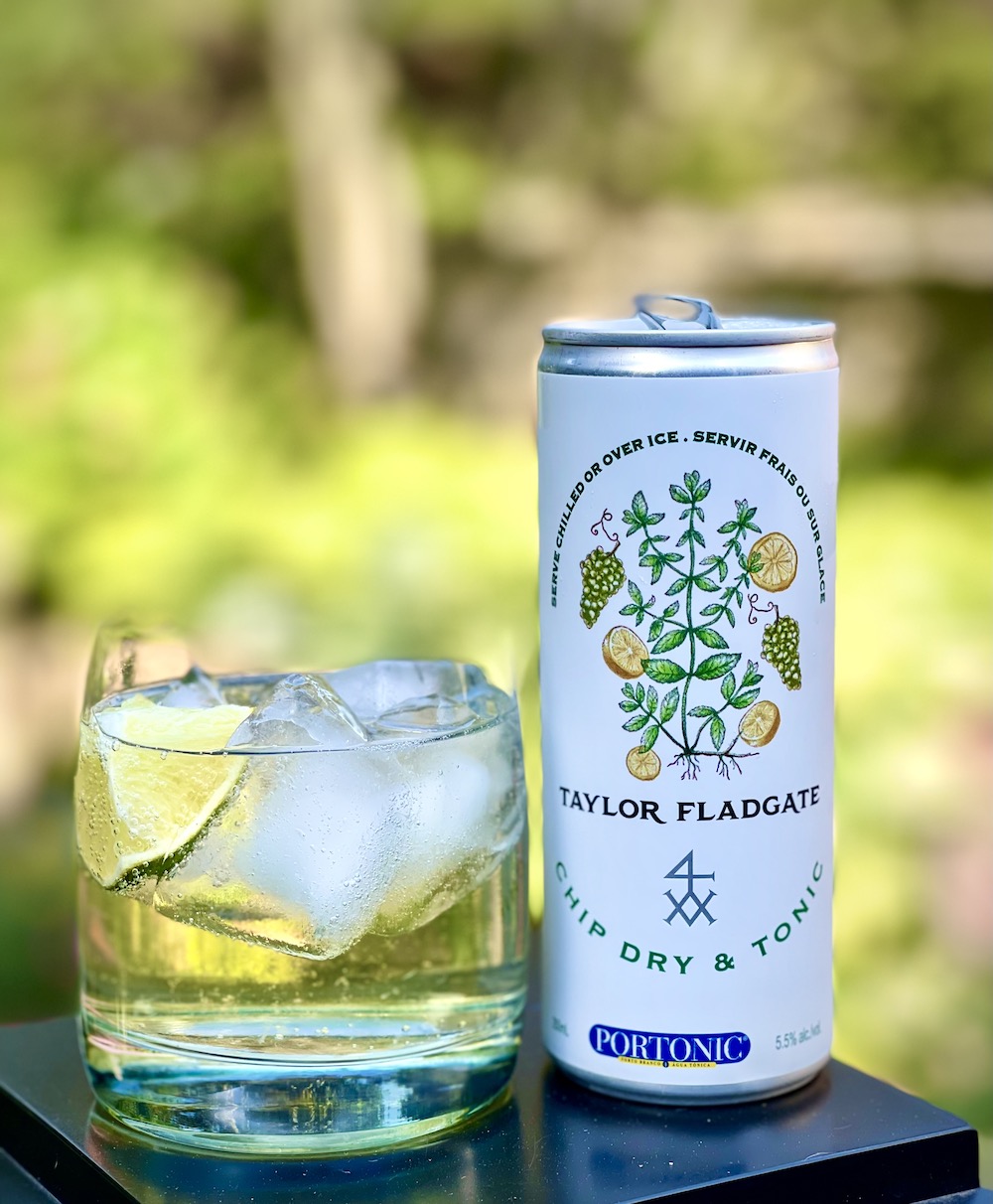
Taylor Fladgate has been crafting Port since 1692. They were first Port producers to develop a dry white aperitif port (Chip Dry) back in 1934, and now they’re the first to launch a ready-to-drink Chip Dry & Tonic, in a 250 mL can. It’s now my favourite RTD cocktail available at the LCBO.
I prefer to drink mine over two or three large ice cubes in a rocks glass with a slice or two of lime and lemon. It has an attractive, refreshing nose and then lovely citrus notes on the palate. It’s pleasingly sweet and not cloying like so many of the RTD cocktails out there. It’s perfect when you’re in the chill zone on the back porch, dock, swimming pool or just winding down after dinner.
This “Portonic” retails for $3.95 per 250 mL can and has 5.5% abv. Because it straddles both the wine and cocktail worlds, it can be difficult to find in the store. But just ask a consultant and they will point in the right direction.
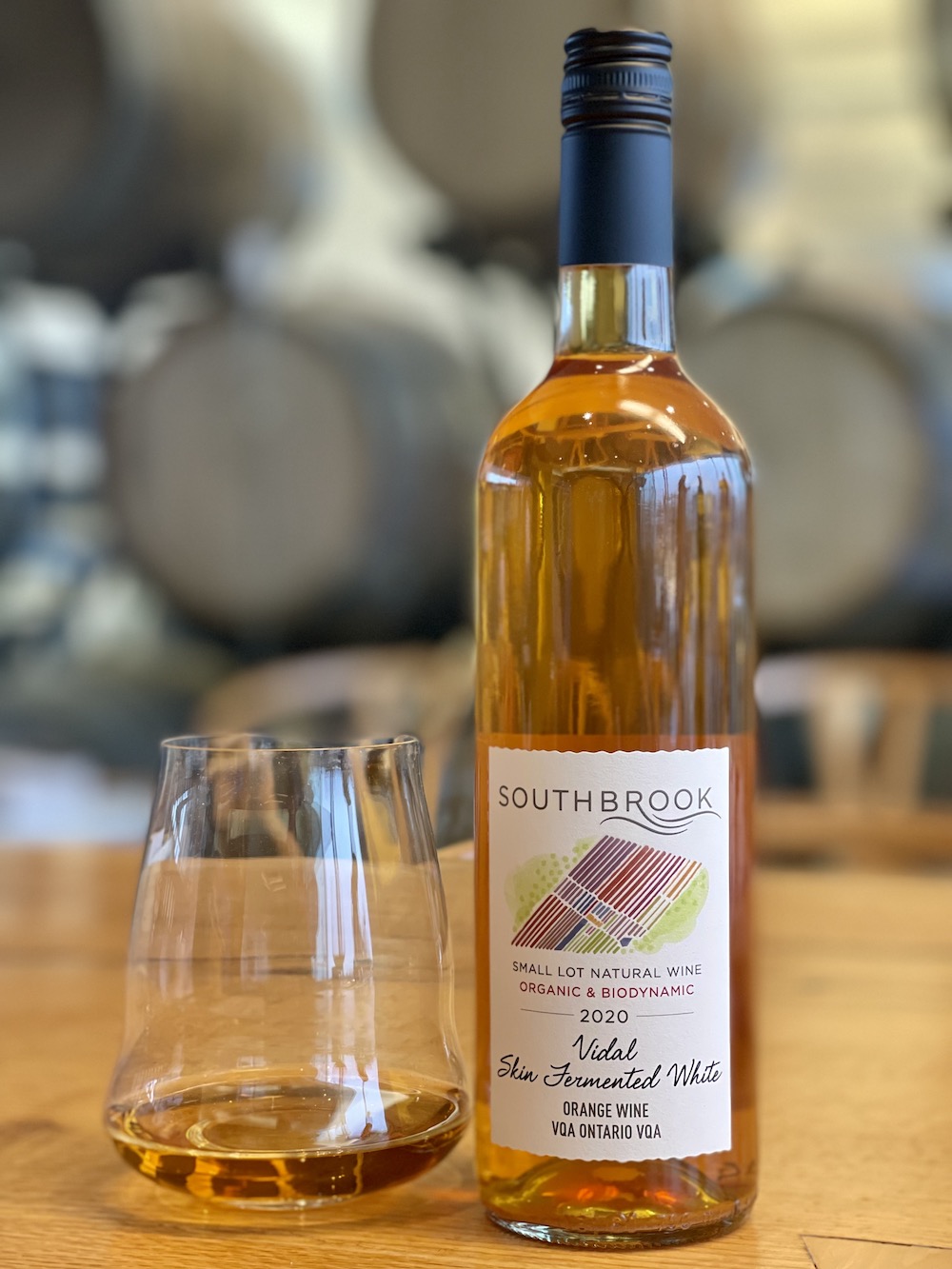
Southbrook Vidal Skin Fermented White 2020 ($30, 90 points) — The estate Vidal grapes were foot trodden to squeeze 30% of the berries and then all of it was included in open top stainless steel fermenters. It was wild fermented with 22 days of skin contact and bottled with some of the lees and is free of additives, including sulphites. It has a pronounced nose of summer peaches, nectarines, orange peel and subtle savoury notes. The searing acidity on the palate and subtle tannic notes amplify the marmalade, fuzzy peach, grapefruit, citrus rind, and savoury herbs through a bright, vibrant finish.
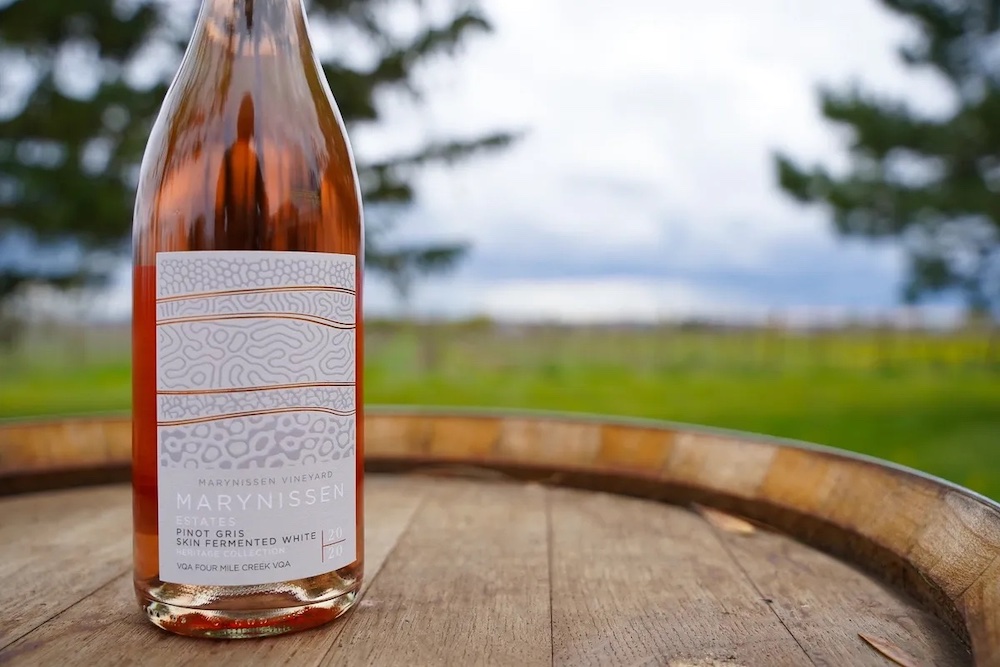
Marynissen Heritage Collection Skin Fermented Pinot Gris 2020 ($25, 88 points) — This estate Gris was fermented on the skins for 10 days with select yeast strains to enhance palate texture and extract colour before being gently pressed. It shows a lovely copper colour in the glass with notes of mature peach, apricot, tangerine, and a clean profile. It’s an approachable “orange” wine and will appeal to consumers new to this style of wine. It shows light tannins in the mouth to go with ripe apricots, peach, nectarine and subtle earthy notes on the lifted finish.
Also released, but not reviewed by Wines In Niagara:
• Peninsula Ridge McNally Vineyard Reserve Malbec 2016 ($30)
• Stratus Petit Verdot 2019 ($39)


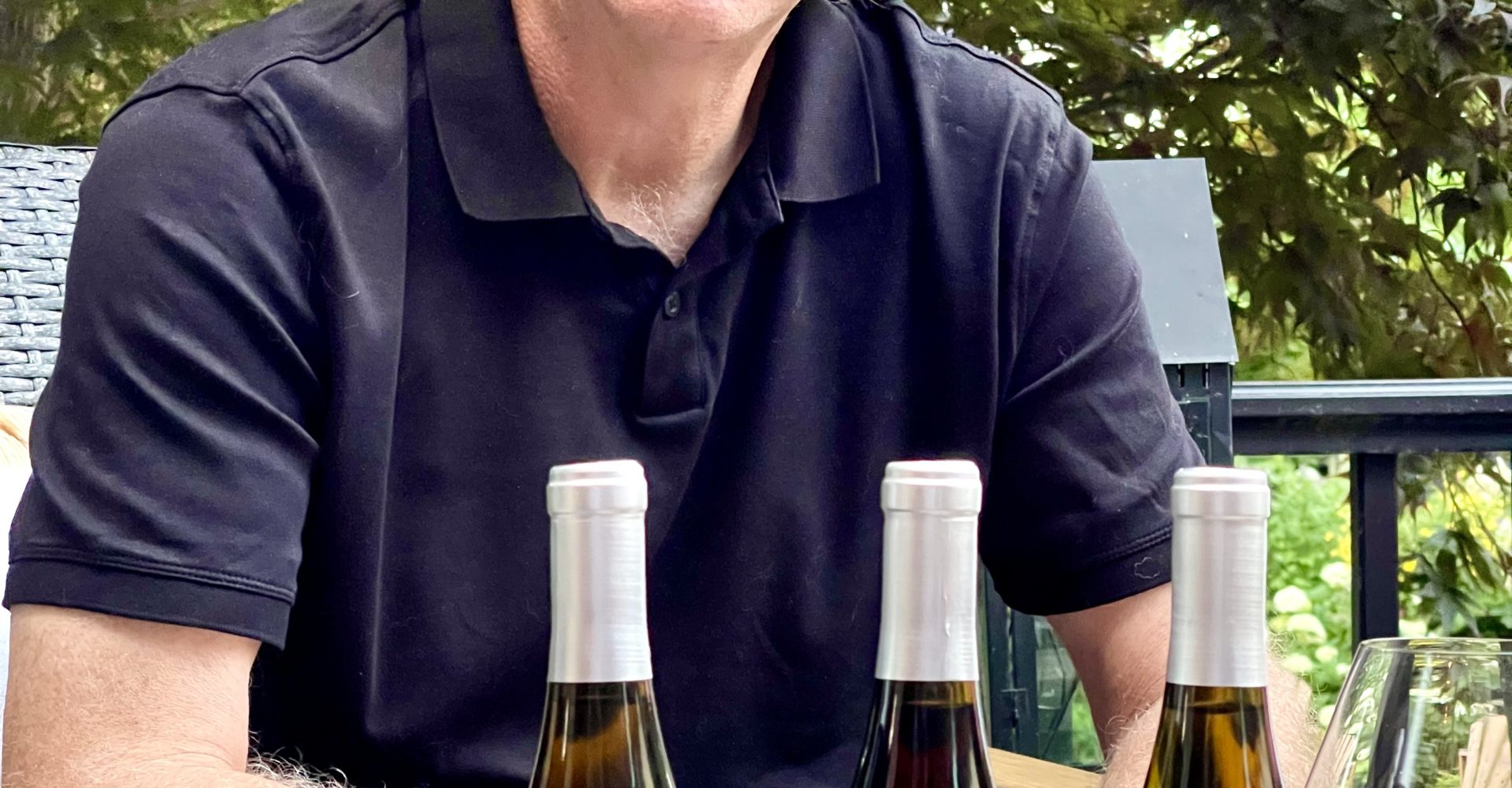




Comment here